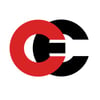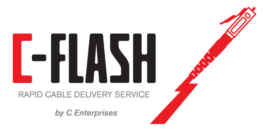
Light emitting diode (LED) lights have taken over the marketplace for many reasons. They last longer, use less electricity, and don’t have to be replaced as often. Here are some of the LED lighting benefits that have individuals and businesses installing them in every fixture.
Energy Efficiency
One of the most important features of LED lighting is the ability to save electricity and conserve resources. LED lights use only half as much electricity as incandescent, fluorescent, and halogen bulbs. When retailers need brightly lit facilities for long hours of the day and warehouses and factories keep the lights on 24/7, LEDs create a substantial savings.
LEDs also emit a focused beam of light that users can aim at a precise location, so light goes exactly where it’s needed instead of being diffused and lost. Traditional bulbs release light and heat in all directions, so some of the available light goes where it isn’t needed. Digital lighting management solutions can use LEDs to dramatically improve energy efficiency.
Longevity
Regular incandescent bulbs burn out, but LEDs just dim as they near the end of their lifespan. Most units last between 30,000 and 50,000 hours. Compare that to the lifespans of traditional bulbs.
- Incandescent bulbs – 1,000 hours
- Compact fluorescents – 8,000 to 10,000 hours
- Halogen lights – 800 to 1,200 hours
Since LEDs last longer, businesses don’t need to replace them as often, which saves on labor and maintenance expenses. They don’t have filaments like incandescent bulbs, so vibration doesn’t cause breakage.

Low Heat Emission
With traditional bulbs, a large portion of the energy from electricity transforms to heat during operation. Halogen bulbs convert up to 80 percent of their energy consumption into heat. Incandescent bulbs are hot to the touch minutes after you turn them on, often producing only 10 percent light and 90 percent heat. Fluorescent bulbs might feel cool to the touch, but only 40 percent of the electricity they use produces light.
Fluorescent lights also require more electricity to illuminate when it’s cold. LED performance only improves with cooler temperatures, making them perfect for snowy parking lots, refrigerated display cases, and walk-in freezers.
Immediate Light
High-intensity discharge (HID) lamps and fluorescent lights are usually dim when users first turn them on. It takes several minutes for them to reach their full brightness. LEDs come on immediately, which retailers and office staff appreciate first thing in the morning or right after a power interruption.
No Dangerous Emissions
The infrared (IR) heat and ultraviolet radiation (UV) produced by incandescent lights can cause burns, making them inappropriate for many installations. LED lights don’t produce IR or UV. They’re especially useful in museums and art galleries, where materials may be sensitive to UV degradation.
Fluorescent bulbs contain materials that can harm the environment. LED lights contain no toxic substances.
Flexibility
LEDs can be installed in any configuration to provide focused, efficient lighting. Some can be dimmed to 10 percent output, making them useful for mood illumination and in airplanes, where only a small amount of on-demand light is needed.
C Enterprises provides cutting-edge cabling solutions for the most efficient lighting solutions. Contact us today to request a quote.






